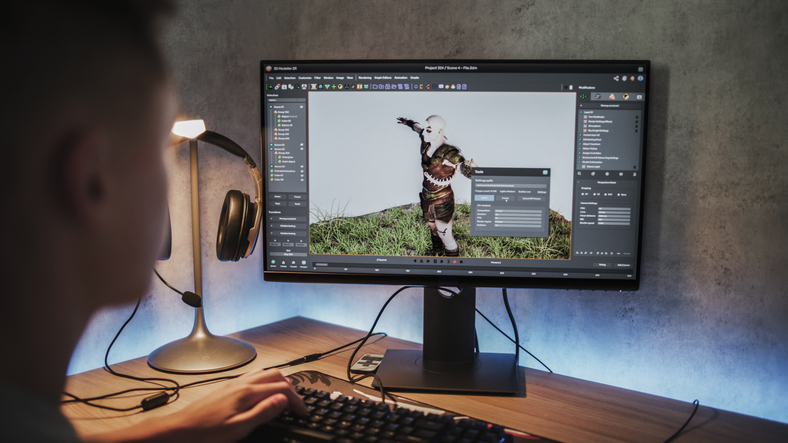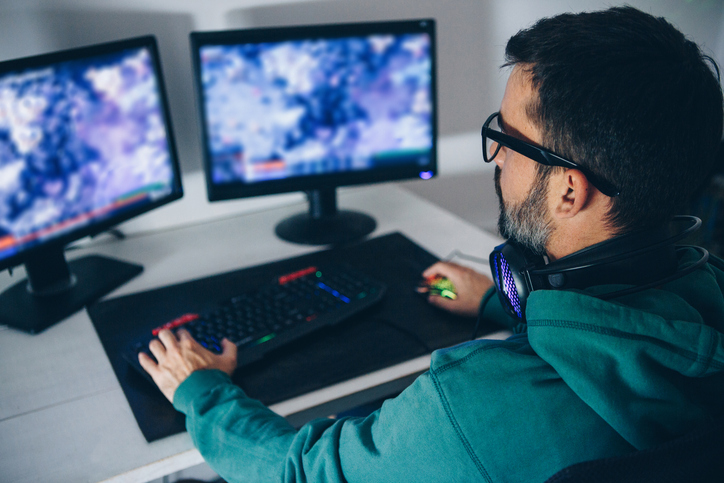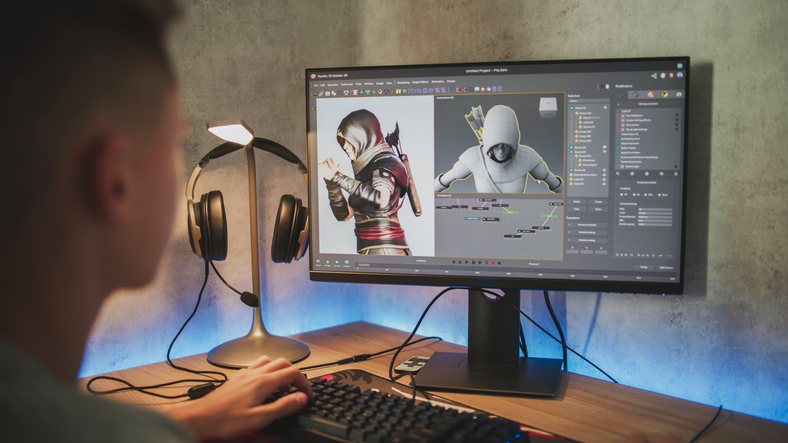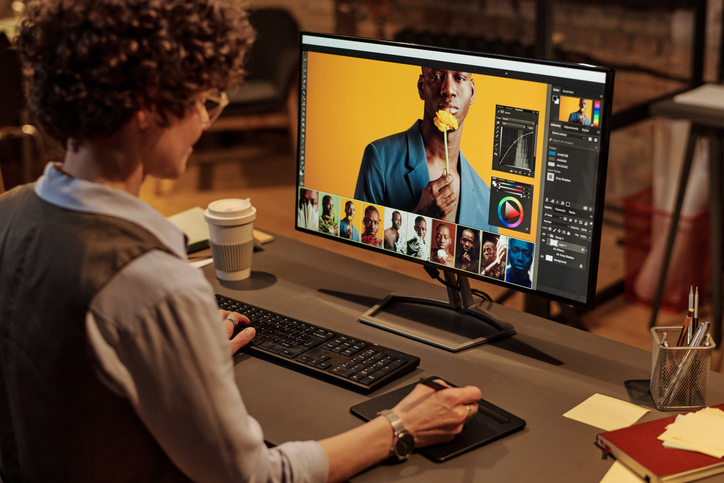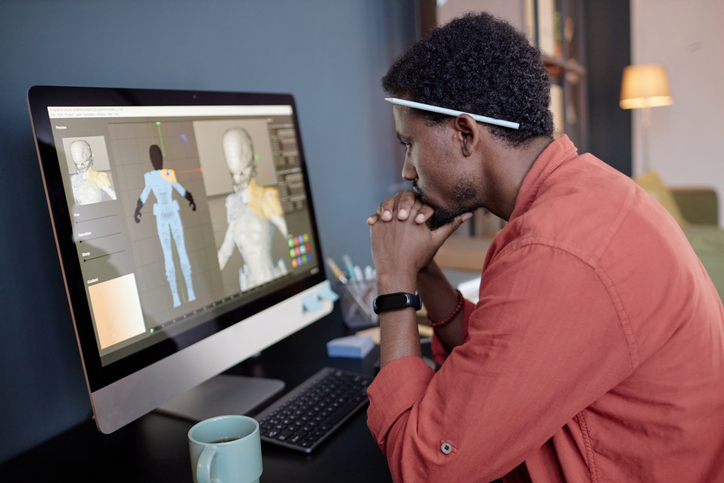Have you ever played a video game so immersive that you felt transported into another world? The rich landscapes, compelling characters, and thrilling gameplay mechanics everything that makes a game truly unforgettable stems from the vision and creativity of a game designer.
Game design is where art meets technology, where storytelling meets interaction, and where imagination becomes reality. But what does a game designer do? How do they bring games to life, and what skills are essential for success in this fast-growing industry?
If you are fascinated by video games and dream of designing your own, you are in the right place. In this blog, we will explore the exciting world of game design, uncover the responsibilities of game designers, and discuss why Canada is a prime destination for aspiring game creators. Most importantly, we will show you how VCAD’s Game Development and Design Diploma can be your first step toward launching a successful career in game design.
Let us press start on this journey!
What is a Game Designer?
A game designer is the visionary behind the rules, mechanics, and interactive experiences that define a video game. They act as the architects of fun, shaping gameplay elements, character movements, level progression, and storylines to create an engaging and immersive experience for players.
While game designers focus on crafting the player experience, game developers handle the technical implementation, ensuring the game runs smoothly through programming and coding. Both roles are essential to bringing a game to life and understanding both aspects can give aspiring professionals a competitive edge in the industry.
Game Design vs. Game Development: What is the Difference?
Many people interchangeably use the terms "game design" and "game development," but they represent various aspects of the game creation process:
- Game Designers focus on the creative elements developing game mechanics, storylines, level layouts, and player interactions.
- Game Developers focus on the technical side writing code, programming mechanics, and optimizing game performance.
Both roles work together to transform an idea into a fully playable game.
At VCAD’s Game Development and Design Diploma program, students gain hands-on experience in both game design and development. This program equips students with the artistic vision and technical expertise needed to create captivating games from start to finish. Whether you dream of designing immersive worlds or bringing them to life through coding, VCAD provides the skills, tools, and mentorship to launch your career in the gaming industry.
Key Responsibilities of a Game Designer
Game designers are the creative force behind the interactive experiences that make video games exciting, engaging, and memorable. Their work extends beyond just producing ideas they must strategically design, refine, and collaborate to bring a game to life. From gameplay mechanics to world-building, game designers play a crucial role in shaping the player's experience.
Here are some of the core responsibilities of a game designer:
1. Designing Gameplay Mechanics
Game designers are responsible for creating rules, interactions, and systems that define how players experience a game. Whether it is combat mechanics in an action game, puzzle solving in an adventure game, or AI behaviors in an RPG, designers must ensure that gameplay is engaging, intuitive, and rewarding. They also focus on game balancing, ensuring that challenges remain fair and enjoyable.
2. Crafting Immersive Storylines & Characters
In narrative-driven games, game designers help develop compelling plots, character arcs, and in-game choices that shape the player’s journey. They work closely with writers and narrative designers to create engaging worlds where players feel emotionally connected to the story and characters. Whether it is crafting epic quests or designing interactive dialogue options, storytelling is a vital part of game design.
3. Level & Environment Design
A game’s world must not only look beautiful but also function seamlessly with the gameplay. Game designers work on level layouts, terrain design, mission structures, and interactive elements that guide the player through the experience. They ensure that levels flow naturally, offer strategic challenges, and maintain a balance between exploration and action. Environmental storytelling is also key where a game’s visual design and setting help tell the story without needing words.
4. Playtesting & Balancing
Great games do not happen overnight, they require extensive testing and refinement. Game designers conduct playtests to analyze how players interact with mechanics, how difficulty levels feel, and whether gameplay is intuitive. If mechanics do not feel fun or engaging, designers adjust balance, tweak controls, or refine progression systems to improve the overall experience. The goal is to ensure a game that is challenging yet enjoyable, immersive yet accessible.
5. Collaborating with Artists, Developers, and Sound Designers
Game designers work as part of a larger creative team, collaborating with artists, programmers, animators, and sound designers to bring their vision to life. They must communicate their ideas clearly, provide feedback, and adapt based on technical limitations or artistic direction. Strong teamwork and problem-solving skills are essential, as designers work through challenges to create a polished final product.
6. Keeping Up with Industry Trends & Player Expectations
The gaming industry is constantly evolving, with modern technologies, platforms, and player preferences emerging all the time. Game designers must stay updated on industry trends, analyze what makes successful games engaging, and adapt their designs accordingly. Whether it is integrating new AI technologies, exploring innovative gameplay mechanics, or enhancing multiplayer experiences, game designers must be forward-thinking and adaptable.
What Does a Game Designer Do Daily?
A day in the life of a game designer is a mix of creativity, problem-solving, and teamwork. Here is a snapshot of what their day might look like:
Morning: Brainstorming & Concept Development
Game designers start the day by discussing innovative ideas, refining game mechanics, and collaborating with the team on narrative or level design.
Midday: Playtesting & Adjustments
They may spend hours testing levels, tweaking mechanics, and analyzing player feedback to ensure smooth, enjoyable gameplay.
Afternoon: Collaboration with Other Teams
Meetings with developers, artists, and sound designers help ensure the game is evolving according to the vision.
Evening: Documentation & Refinements
Game designers document changes, adjust gameplay flow, and make perfecting touches before another day of iteration begins!
Bonus Read: Do You Need a Degree to Become a Game Developer?
Skills Required to Succeed as a Game Designer
Becoming a successful game designer requires more than just a love for video games. It demands a unique combination of creativity, technical knowledge, problem-solving, and collaboration. Designers must think like storytellers, architects, and strategists, ensuring that every element of the game, from gameplay mechanics to level design works harmoniously to create an immersive experience.
Here are the key skills every aspiring game designer should develop:
1. Creativity & Storytelling
At its core, game design is a creative discipline. Game designers invent worlds, shape narratives, and design mechanics that captivate players. Whether it is a fantasy RPG with deep lore, a fast-paced action game, or a puzzle game that challenges the mind, designers must bring imagination and innovation to their work. Strong storytelling skills help in crafting compelling characters, emotional arcs, and interactive narratives that resonate with players.
2. Technical Knowledge
While game designers do not need to be expert programmers, a basic understanding of game engines like Unity, Unreal Engine, or Godot is highly valuable. Knowing how game physics, AI behavior, and scripting work allows designers to collaborate effectively with developers and troubleshoot issues. Many designers also learn basic coding in C++, C#, or Python to prototype gameplay ideas before passing them to developers.
3. Problem-Solving & Critical Thinking
Game design is an iterative process designers must constantly analyze, refine, and improve mechanics to ensure a game is engaging. Whether it is balancing difficulty levels, refining movement controls, or adjusting in-game economies, problem-solving skills are crucial. Designers must anticipate potential player frustrations, predict how mechanics will be used, and fine-tune elements for an optimal experience.
4. Communication & Collaboration
Game design is rarely a solo endeavor, it is a highly collaborative process that involves artists, animators, developers, producers, and sound designers. Effective communication skills help game designers clearly convey their ideas, provide constructive feedback, and ensure that the team stays aligned. Designers must also be receptive to criticism and player feedback, refining their work based on testing and insights.
5. Attention to Detail
Even the smallest elements in a game, the timing of a jump, the placement of obstacles, the way a character reacts to an action can make a significant difference in gameplay. Game designers must be meticulous in crafting experiences, ensuring that every pixel, mechanic, and interaction is polished and intuitive.
Tools & Software Used by Game Designers
Game designers use a variety of industry-standard software to create, develop, and refine video games. These tools help in designing gameplay mechanics, building immersive worlds, and animating characters. Here are some of the essential tools used in game design:
1. Game Engines: Unity & Unreal Engine
- Unity – A widely used engine for 2D and 3D game development, ideal for indie and mobile games. Supports C# scripting.
- Unreal Engine – Known for high-quality graphics and used in AAA game development. Features Blueprints visual scripting for designers with minimal coding experience.
2. 2D & 3D Modeling: Photoshop, Blender, Maya
- Adobe Photoshop – Used for concept art, textures, and UI design.
- Blender – A free tool for 3D modeling animation, and game assets.
- Maya – Industry-standard software for 3D character design, animation, and rendering.
3. Programming & Scripting: C++, C#, Blueprints
- C# (Unity) – Used to script gameplay mechanics and AI behavior.
- C++ (Unreal Engine) – A high-performance language for advanced game logic.
- Blueprints (Unreal Engine) – A visual scripting system for creating game mechanics without coding.
How VCAD’s Game Development and Design Diploma Prepares You for Success
If you are passionate about game design and development, the VCAD Game Development and Design Diploma provides a comprehensive, hands-on education that equips students with the skills, experience, and industry connections needed to succeed.
Why Choose VCAD’s Game Development and Design Diploma?
Practical, Hands-On Learning: Gain experience working with industry-standard tools like Unity, Unreal Engine, Maya, and Blender, applying them to real-world game projects.
Expert Instruction & Mentorship: Learn from seasoned professionals who have worked on AAA and indie game projects, ensuring that your education is informed by real-world industry practices.
Game Design & Development Training: Develop expertise in game mechanics, level design, character creation, animation, and programming, giving you a well-rounded skill set for the gaming industry.
Portfolio Development & Displaying: Build a professional portfolio featuring your own game projects, displaying your creativity, technical ability, and design expertise to potential employers.
Industry Networking & Career Support: Benefit from career placement assistance, internship opportunities, and networking events to help you connect with top game studios and industry professionals.
Whether you aspire to work in AAA studios, indie game development, or interactive media, VCAD’s Game Development and Design Diploma provides the foundation you need to turn your passion into a career.
Start Your Game Design Journey Today!
Game design is one of the most exciting, creative, and rewarding careers in the entertainment industry. With Canada’s booming gaming scene and VCAD’s comprehensive Game Development and Design Diploma, your dream career is within reach!
Are you ready to turn your passion for gaming into a profession?
Apply to VCAD today and start designing the games for tomorrow!
Click here to learn more about VCAD’s Game Development and Design Diploma!
